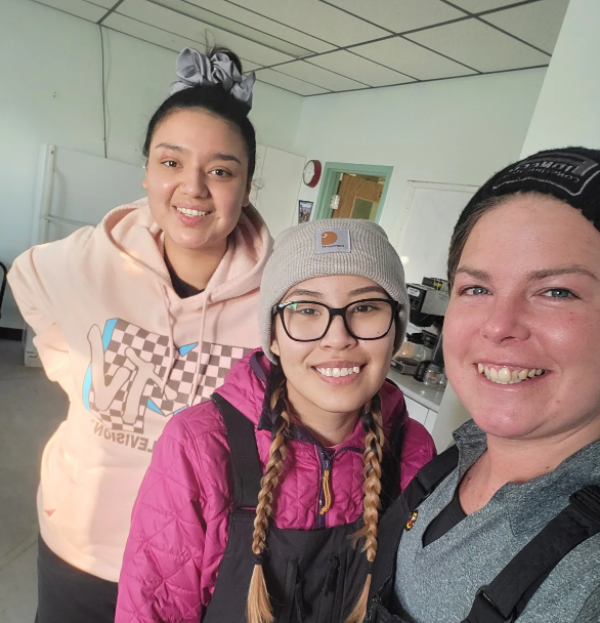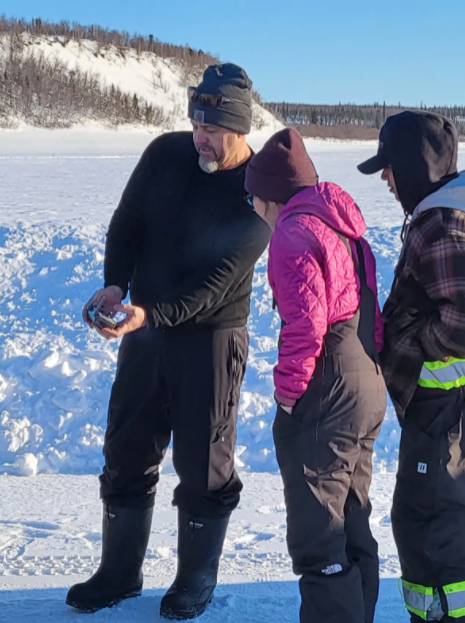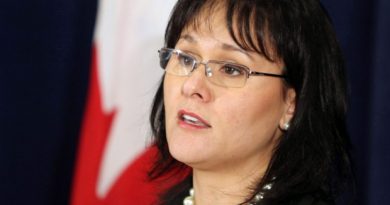Preserving Indigenous language, cultural teachings with tech in Northwestern Canada

Preserving language and culture is important for Indigenous people, and from creating language apps to cultural camps, there have been many creative ways at bringing traditions to youth.
One organization in northwestern Ontario is doing its part — through virtual reality.
ORIGIN is a First Nation-owned business based in Thunder Bay, Ont., that recently went to the Northwest Territories, along with Arctic Indigenous Innovations, to get 2D and 360-degree footage to create a virtual reality experience.
For nine days in February and March, the teams worked with the Gwich’in community to capture places and traditions that are important to them to recreate it in a virtual reality format for both elders and youth. It was also done completely in Gwich’in.
Charmaine McCraw, ORIGIN’s Indigenous engagement and training lead, said they worked with a group of some 15 people — elders and youth — and it was a “really amazing” experience.
“There was quite a range of knowledge within the nation there and the people that we were working with,” said McCraw.
As an Ojibway woman from northwestern Ontario, McCraw said it was interesting to see the differences and similarities between the Gwich’in community and the Ojibway community, as a lot of people tend to think of Indigenous people living up north only as Inuit.

“Definitely a lot of very area-based traditions that make them very unique,” McCraw said. “So their caribou harvest and the mountains and the lifestyle … making sure safety comes first and all those types of things, those are some of the cool things to learn.”
McCraw said a project such s this gives the community the opportunity to tell their own stories and to inspire youth to carry on these traditions — while also being able to travel to these spaces without actually physically being there.
“A lot of the time we have a lot of urban youth that are not living close to their traditional territory but want to stay connected,” McCraw said. “They can put on their community experience and then be as if they were standing by the river back home or sitting with an elder that was telling a story about something that was significant to their community.”
McCraw said the platform can also integrate existing footage, so if something has been captured that the community doesn’t want to see go away, they can plant them in their interactive environment and be available for youth and elders.
Rhianna Firth, a Gwich’in youth who participated with the ORIGIN crew throughout the time they were in the community, got involved after hearing her grandfather, who organized it, talk about it, and thought it would be a cool experience.
Firth, her brother and some friends took part in some activities with the group.
“I thought it was actually pretty cool because nothing like that has ever been done. And I think this is just the start of something.”

Firth said she was there to really see how they do their work and just experience what they’re capturing, but helped out with some traditional practices that were captured for the project.
“We wore parkas, and mukluks and like traditional shoes, mitts, and most of our stuff that we wore was made by the older generation and people that have passed on.”
Firth said it felt good to be able to wear that history for the project, and for it to be captured so that others will be able to see it. She also got to learn a lot about capturing those images and more about what ORIGIN does.
“It was really good, really good. We got to learn a lot about the camera stuff. I got to fly a drone … we got to learn how to like put the stuff onto the computer and edit it.”
It’s uncertain if ORIGIN will head back to the community to capture more images, but if they do, Firth said she would like to capture working with fish in the summer and how they catch the fish in nets.
“I think that once people and different organizations see this project, they’re going to want to expand it further.”
Related stories from around the North:
Arctic: German project to house everything published in Siberian and Arctic languages to seek new funding, Eye on the Arctic
Canada: Mark Indigenous languages decade by making Inuktitut official in Canada: Inuit UN rep, The Canadian Press
Finland: Everyone encouraged to boost Sami language visibility in Finland, Norway and Sweden this week, Eye on the Arctic
Norway: Indigenous and minority language names for Norway now have official status, The Independent Barents Observer
Sweden: Can cross-border cooperation help decolonize Sami-language education, Eye on the Arctic
United States: Inuit leaders applaud UN move to designate International Decade of Indigenous Languages, Eye on the Arctic



